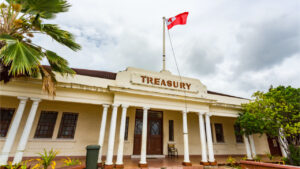Imagine BitMEX was decentralized and built on Solana, and you begin to understand Drift Protocol’s North Star. And with $3.8 million in fresh capital in hand, the project is inching closer to its objective.
The funding round was led by Multicoin Capital, with Alameda Research, QCP Capital, Robot Ventures, Jump Capital, Not3Lau, and a host of other angel investors joining.
Despite the similarities to heavyweights BitMEX, there are some key differences between the emerging DeFi project and the crypto exchange which, at press time, has processed nearly $2 billion trading volume in the last 24 hours.
What is Drift?
First, Drift uses a variation of an automated market maker (AMM) rather than an orderbook to fill traders’ orders. The design choice is found throughout crypto, but most decentralized exchanges (DEXs) opt for an AMM. Despite AMMs gaining popularity, there is still a trade-off.
Each time a trade is made on an AMM platform like Uniswap or Drift, traders must be mindful of pesky slippage. Slippage refers to the difference in price between the order placed and the order which is executed. During times of volatility, for example, the gap between these two figures can be large, leaving traders in the lurch. Slippage is particularly noticeable on exchanges that use the AMM model and may not have deep enough liquidity.
Though order book exchanges still suffer from slippage, the effects are dulled due to the presence of third-party market makers. Oftentimes though, market makers will take a small fee for ensuring trades are executed as accurately as possible.
Herein lies the tradeoff: Should traders bear the brunt of slippage, potentially losing a percentage of their trade, or should market makers be compensated for ensuring slippage is limited?
The latter is what Cindy Leow, co-founder of Drift, calls “market maker extractible value.” What’s more, Leow and her team have opted for a Dynamic Automated Market Maker (DAMM) to try and achieve the best of both worlds. “It delivers the capital efficiency of a deep, robust market with the always-on extensibility of an AMM while giving traders the features they want, like cross-margining and leverage,” she said. “In our DAMM testnet, Drift created at least 10x better capital efficiency over the existing options in the market.”
A percentage of any slippage that does inevitably occur will be put towards the platform’s insurance fund, Leow told Decrypt. “Slippage fees will make up most of the fund’s contributions,” she said. “But trading fees and liquidation fees will also be added to the fund.”
4/
Community Q #1
How does the funding rate mechanism work?The insurance fund will fill funding imbalances between longs and shorts. Every time a user interacts with the AMM, it pays out the funding each user owes from the user’s collateral account.
— Drift Protocol (@DriftProtocol) July 26, 2021
The latest funding round will assist with providing initial liquidity to cushion any major slippage risks as well as secure the insurance fund.
Drift launched yesterday on an alpha mainnet, but only those who hold a Drift Alpha Ticket non-fungible token (NFT) are able to access the platform. These NFTs were distributed to early Discord users as well as other members of Solana’s DeFi ecosystem.





















